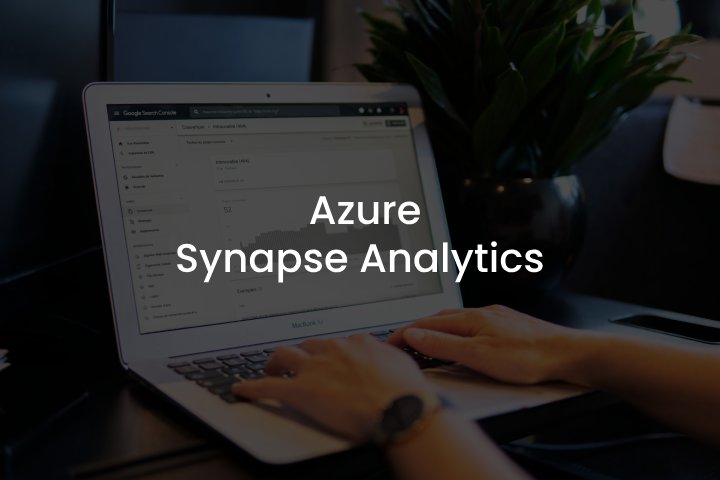
Deep Dive into Mastering Data with Azure Synapse Analytics
In today’s rapidly changing market, businesses should reveal the full power of information to thrive, upgrade, and scale one step ahead of rivals. This Microsoft service offers a complex environment incorporating big data, storage, and detailed analytics. The tool is specifically designed to simplify the ingestion, preparation, and serving of information for fast and efficient insights.
In this article, we briefly describe the useful capabilities of Microsoft’s robust analytics platform uncover best practices for using it, and answer the most popular questions.
What is Azure Synapse?
A new iteration of SQL Data Warehouse, Azure Synapse offers its users a secure SaaS (Software as a Service) platform for analyzing massive business data flows and developing useful insights. The tool helps organizations to structure information, store it, and make informed decisions based on generated reports.
Azure Synapse includes several components, such as serverless and dedicated SQL pools for running T-SQL queries and performing OLTP workloads, respectively. Additionally, the service features Apache Spark for big data processing. This diverse but crucial combination makes a Microsoft product a versatile solution for various data-driven challenges.
Can you store big data in Azure Synapse analytics?
Absolutely! That’s why Microsoft launched the service. Azure Synapse became a reliable digital assistant capable of handling petabytes (10^15) of information. Its intelligent architecture ensures scalability as the platform can adapt to rapidly growing volumes of datasets. The tool integrates various sources like Azure Data Lake Storage to keep and process large amounts of structured and unstructured information. Azure Synapse may analyze vast data collections using familiar SQL syntax and leverage Spark for machine learning (ML) workloads.
What do Azure Synapse Analytics integration services entail?
To create channels that extract, convert, and load (ETL) data into a working environment, leveraging specialized services is vital. The critical components that help to orchestrate business information include:
- Dataflows
They transform and clean information before adding it to the warehouse or datalake. These tools excel at creating a robust foundation for future reporting and analysis, preparing data for ML models, and changing raw formats into visually understandable ones.
- Copy activity
Being the main driving force in Azure Synapse, the feature is responsible for moving data from one store to another. It efficiently exchanges information between various connected clusters (on-premises and cloud). The tool recognizes various formats, making it perfect for building trustworthy data pipelines.
- Lookup activity
This feature forms a single or several rows of information in response to a user’s query. Lookup activities often gather materials from supported sources, which are further used for subsequent analytical steps.
Integrated Azure Synapse services are crucial for constructing efficient pipelines that seamlessly manage the ETL process. These activities empower seekers to make weighted decisions and unlock their assets’ hidden capabilities.

Best Practices for Analysis with Azure
If you want to extract maximum value from business information, follow these steps:
- optimize your data structures
- monitor performance
- regularly launch analytical processes
In this section, we’ll describe how you can do it in more detail.
Data Modeling
A well-structured data model is the cornerstone of efficient query outcomes and insightful analysis. While using Azure Synapse Analytics, you can choose various approaches based on your needs. Start by looking at star schema: it’s ideal for dimensional modeling and OLAP workloads. A more complex option is сolumnstore indexes on frequently queried columns to improve query performance.
Indexing
Indexing is a critical component of optimizing queries. Creating appropriate indexes can significantly reduce code execution time and improve system responsiveness.
Partitioning
One of the most powerful techniques is to divide large tables into smaller, more manageable segments based on a specific column. This approach is a must-have in strategic planning if you want to positively impact storage efficiency and request performance.
Query Optimization
The process involves developing suitable SQL inquiries for reliable and swift results. In Azure Synapse, this is particularly crucial due to the potential increase in data.
Workload Management
Optimizing overall system productivity will make your dataflows work like clockwork. To accomplish this, you should consider resource allocation, prioritization, query governors, monitoring, and tuning.
Security
The service cares about the client’s safety, providing features to safeguard their privacy. For instance, you can implement firewalls and virtual networks to secure sensitive data. Role-based access control (RBAC) will set permissions only to chosen users, while Azure Security Center will become useful against cyber threats and vulnerabilities.
Conclusion
Azure Synapse Analytics can help organizations of any level gain strategic insights from operational data, uncover hidden possibilities, and utilize them for business growth. If you want to get the maximum value from this Microsoft product, applying integration services, optimizing modeling, indexing, and other beneficial practices is essential for building efficient pipelines.
The answer to optimization and improvement of your workflows lies at the surface. You just need a reliable service and a comprehensive understanding of subsequent steps to generate valuable outputs from unstructured inputs.


